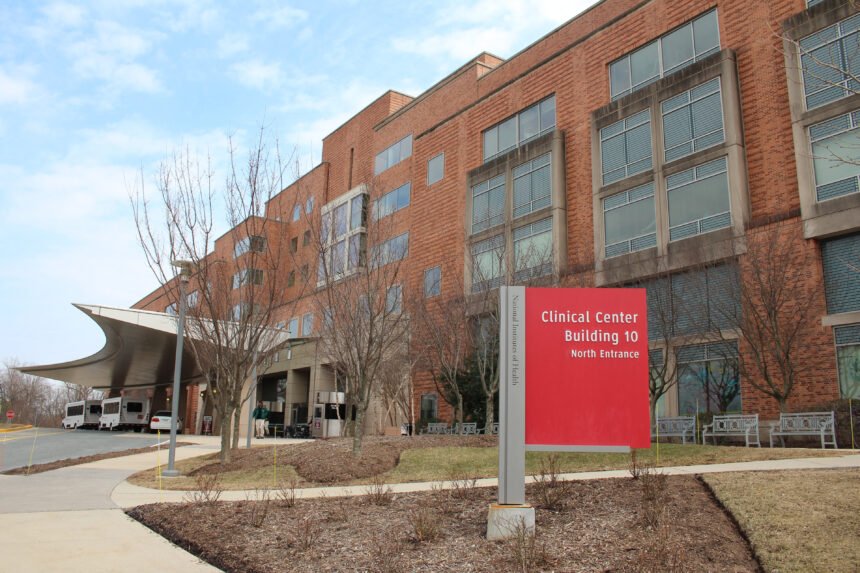Decline in Patient Care at NIH Clinical Center Raises Concerns
Recent government documents obtained by KFF Health News reveal a significant decline in patient care at the National Institutes of Health (NIH) Clinical Center, a prestigious 200-bed research hospital located in Bethesda, Maryland. This trend, which has been ongoing for several months, raises questions about the future of patient care and clinical research at one of the nation’s leading medical institutions.
A Steady Decline in Patient Numbers
Data indicates that as of mid-August, the average daily patient count at the NIH Clinical Center has plummeted to approximately 60, a stark contrast to the average of 80 patients per day recorded last October. This decline has been particularly pronounced since February, coinciding with a series of policy changes and administrative actions taken during the Trump administration, including mass firings of government employees and a crackdown on immigration.
The NIH Clinical Center has long been recognized for its contributions to medical research and patient care, particularly in the fields of cancer and rare diseases. However, the recent drop in patient numbers has raised alarms among current and former staff members, who attribute the decline to several interrelated factors.
Factors Contributing to the Decline
One of the primary reasons cited for the decrease in patient care is the exodus of clinicians, scientists, and support staff from the NIH. As researchers leave the institution, the capacity to recruit new patients for clinical trials diminishes. This not only affects the number of patients receiving care but also hampers the advancement of critical medical research.
Additionally, the tightening of immigration policies under the Trump administration has likely deterred many patients, particularly those without legal status, from seeking treatment at the NIH. The federal government’s stricter regulations for international visitors have further complicated access to care for those who might otherwise benefit from the NIH’s specialized services.
Official Response and Ongoing Operations
In response to the declining patient numbers, Andrew Nixon, a spokesperson for the Department of Health and Human Services (HHS), stated that the reduction in patient volume has been a trend for several years. He emphasized that the NIH Clinical Center remains fully operational and continues to provide world-class clinical research and patient care. However, the ongoing decline raises questions about the sustainability of these services in the long term.
Historical Context and Comparisons
The NIH Clinical Center has a storied history, having been established in 1953 as a hub for clinical research. Over the decades, it has played a pivotal role in numerous medical breakthroughs, including advancements in cancer treatment and the development of therapies for rare diseases. The current decline in patient care is reminiscent of challenges faced by other major medical institutions during periods of political and economic upheaval.
For instance, during the 1990s, the National Institutes of Health faced budget cuts that led to a temporary reduction in research funding and patient care capabilities. However, the institution rebounded in the following years, thanks in part to increased public and governmental support for biomedical research. The current situation at the NIH Clinical Center, however, presents a more complex challenge, as it intertwines issues of staffing, immigration policy, and the broader landscape of healthcare in the United States.
The Impact on Patients and Families
The decline in patient care at the NIH Clinical Center is not just a statistic; it has real implications for patients and their families. Many individuals with complex medical conditions rely on the specialized services offered by the NIH, and a reduction in available care can lead to delays in treatment and diminished access to cutting-edge clinical trials.
Patients and their families are encouraged to share their experiences regarding how these changes have affected their care. Personal stories can shed light on the human impact of administrative decisions and highlight the importance of maintaining robust healthcare services at institutions like the NIH.
Conclusion
The decline in patient care at the NIH Clinical Center is a concerning trend that reflects broader issues within the healthcare system and the impact of political decisions on medical research and patient access. As the NIH navigates these challenges, the importance of maintaining high-quality patient care and fostering an environment conducive to research cannot be overstated. The future of the NIH Clinical Center will depend on addressing these issues and ensuring that it remains a leader in medical research and patient care for years to come.










